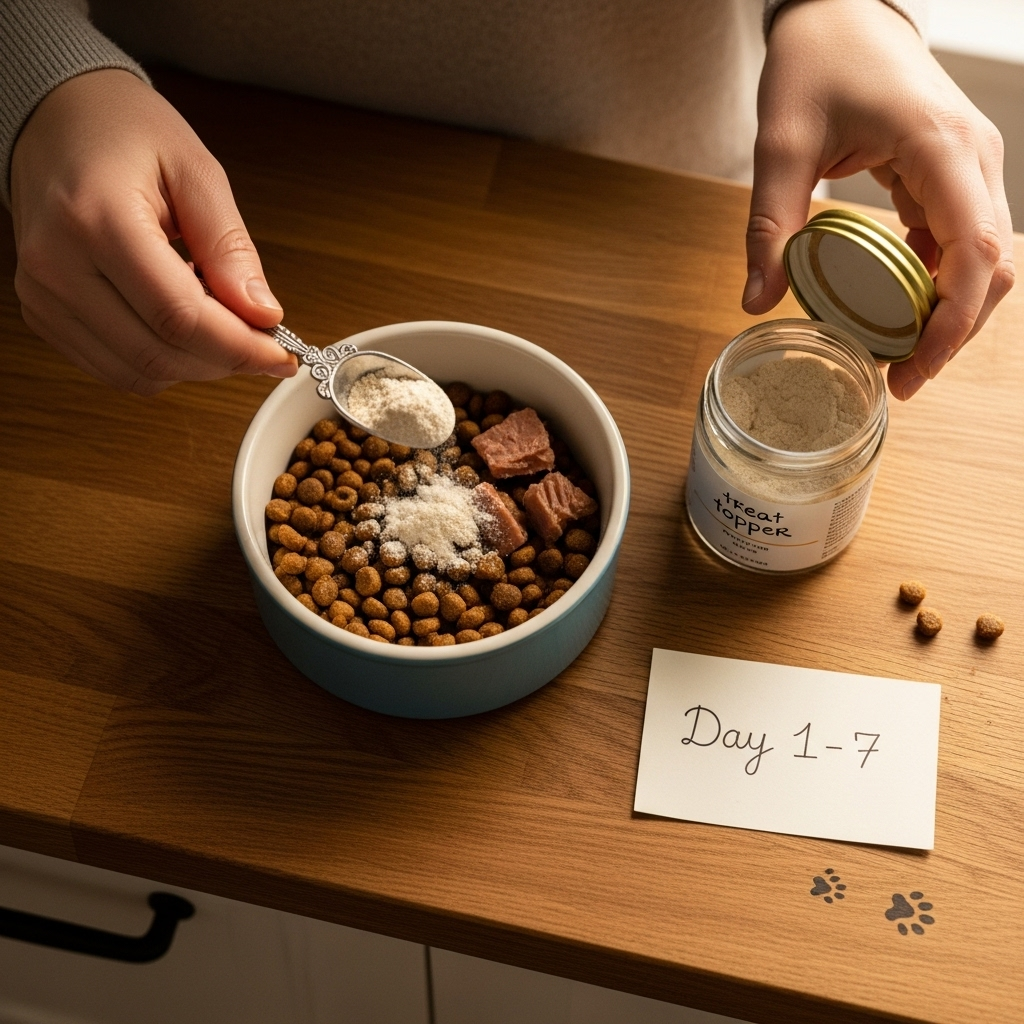How to Introduce Probiotics to Picky Pets (Step-by-Step)

Introducing probiotics to a picky dog or cat can feel challenging, but with the right approach you can increase acceptance and help your pet get the digestive support they may need. This guide gives a step-by-step plan, practical tips for picky eaters, safety notes, and answers to common questions so you can add probiotics gently and confidently.
Why consider probiotics for your pet?
Probiotics are live beneficial bacteria that may support digestion, nutrient absorption, and a healthy balance of gut microbes. Pet owners commonly use them for mild digestive upsets, after a course of antibiotics, during dietary changes, or to support overall gut health. Not every pet needs a probiotic, and not every product is appropriate for every animal, so choosing the right product and introducing it carefully is important—especially for picky pets.
General safety reminders before you begin
- Ask your veterinarian before starting probiotics, particularly if your pet is very young, elderly, pregnant, immunocompromised, or currently ill.
- Use products formulated for your species (cat, dog, or other pets). Avoid giving human probiotics without veterinary approval.
- If your pet has severe diarrhea, blood in stool, repeated vomiting, or dehydration, seek veterinary care instead of attempting home treatment first.
Step-by-step plan to introduce probiotics to picky pets
-
Choose the right product and form:
Select a veterinary-formulated probiotic for your pet’s species. Options include powders/powdered sachets, soft chews, capsules, and refrigerated formulas. For picky eaters, flavored chewables or powders that mix into food are often easiest to disguise.
-
Prepare for a gradual introduction:
Start slowly over 5–10 days. Jumping straight to the full dose can upset a sensitive stomach or trigger refusal. A gradual approach helps your pet’s gut microbiome adjust and gives you the chance to find palatable ways to serve the probiotic.
-
Day 1–2: Tiny taste test:
Offer a very small amount—about 25% of the recommended dose—mixed with something highly tempting (see tips below). If your pet accepts it and shows no adverse reaction in 24 hours, continue at this level for 2–3 days.
-
Day 3–6: Increase slowly:
Move to 50% of the recommended dose for the next 2–3 days. Watch for changes in stool consistency, appetite, energy, and any gastrointestinal signs like gas or soft stools.
-
Day 7–10: Full dose:
If your pet tolerated the lower amounts with no problems, give the full labeled dose. Maintain for the period recommended by your veterinarian or the product label, and continue monitoring.
-
Adjust if needed:
If you notice mild, temporary gas or softer stool, slow the rate of increase or temporarily drop back a step for a couple of days. If signs worsen or you see blood, vomiting, lethargy, or significant appetite loss, stop the supplement and contact your veterinarian.
Practical tricks for picky eaters
- Mix powder into warm, strongly scented wet food or low-sodium chicken/turkey broth to mask smell and taste.
- Use a small dab of canned fish (tuna/sardine in water) or plain cooked chicken to hide capsules or powders—offer the bait separately first so the pet learns to associate it with a treat.
- For cats, try smearing a small amount on the paw or a treat so they will lick it off; many cats groom themselves and will ingest the probiotic this way.
- Freeze probiotic-mixed wet food in ice cube trays for a slow-release treat. For dogs, mix a probiotic into a small amount of plain yogurt (pet-safe types) if approved by your vet and your pet tolerates dairy.
- Offer probiotic chews as a treat if the product is palatable and labeled for your pet’s species.
Monitoring and expectations
Most pets show subtle improvements in digestion, stool quality, or appetite within a few days to a few weeks. Keep a simple log (date, dose, food, stool quality, appetite, energy) to spot trends. If there’s no improvement after 3–4 weeks, or if there are negative signs, consult your veterinarian to reassess the product, dose, or underlying conditions.
Pros and Cons
| Pros | Cons |
|---|---|
| May support digestion and stool consistency | Some pets may resist new flavors/textures |
| Can help restore gut flora after antibiotics | Mild side effects (gas, soft stool) possible during adjustment |
| Available in multiple palatable forms | Not a substitute for veterinary diagnosis or treatment |
FAQ
Will probiotics make my picky pet sick?
Most adult pets tolerate probiotics well. Mild, short-lived effects like gas or softer stools can occur while the gut adjusts. Stop use and contact your veterinarian if your pet becomes very sick, shows blood in stool, has repeated vomiting, or becomes lethargic.
How long before I see benefits?
Some owners notice small changes in 3–7 days; other improvements may take 2–4 weeks. If no improvement is seen after a reasonable trial (as advised by your vet), reassess the product or underlying issues with your veterinarian.
Can I give my pet human probiotic supplements?
It’s best to avoid human supplements unless your veterinarian specifically approves them. Probiotics designed for pets contain strains and doses appropriate for animals, while human products may not be safe or effective for pets.
What if my pet is on antibiotics?
Probiotics are often used during or after antibiotics to help maintain gut balance. Give probiotics a few hours separate from antibiotic dosing (a common rule is a 2-hour gap), and check with your veterinarian about timing and recommended strains.
Key Takeaways
- Choose a species-specific, veterinarian-recommended probiotic.
- Introduce slowly—start with a reduced dose and increase over 7–10 days.
- Use palatable mixers and tricks to help picky pets accept the supplement.
- Monitor stool, appetite, and energy; log changes to track progress.
- Consult your veterinarian for dosing, product choice, and if any concerning symptoms occur.
Disclaimer: This information is educational and not a substitute for professional veterinary advice. Always consult your veterinarian before starting any new supplement, especially if your pet has health issues or is taking medications. If your pet shows severe or worsening symptoms, seek veterinary care promptly.

Leave a Reply